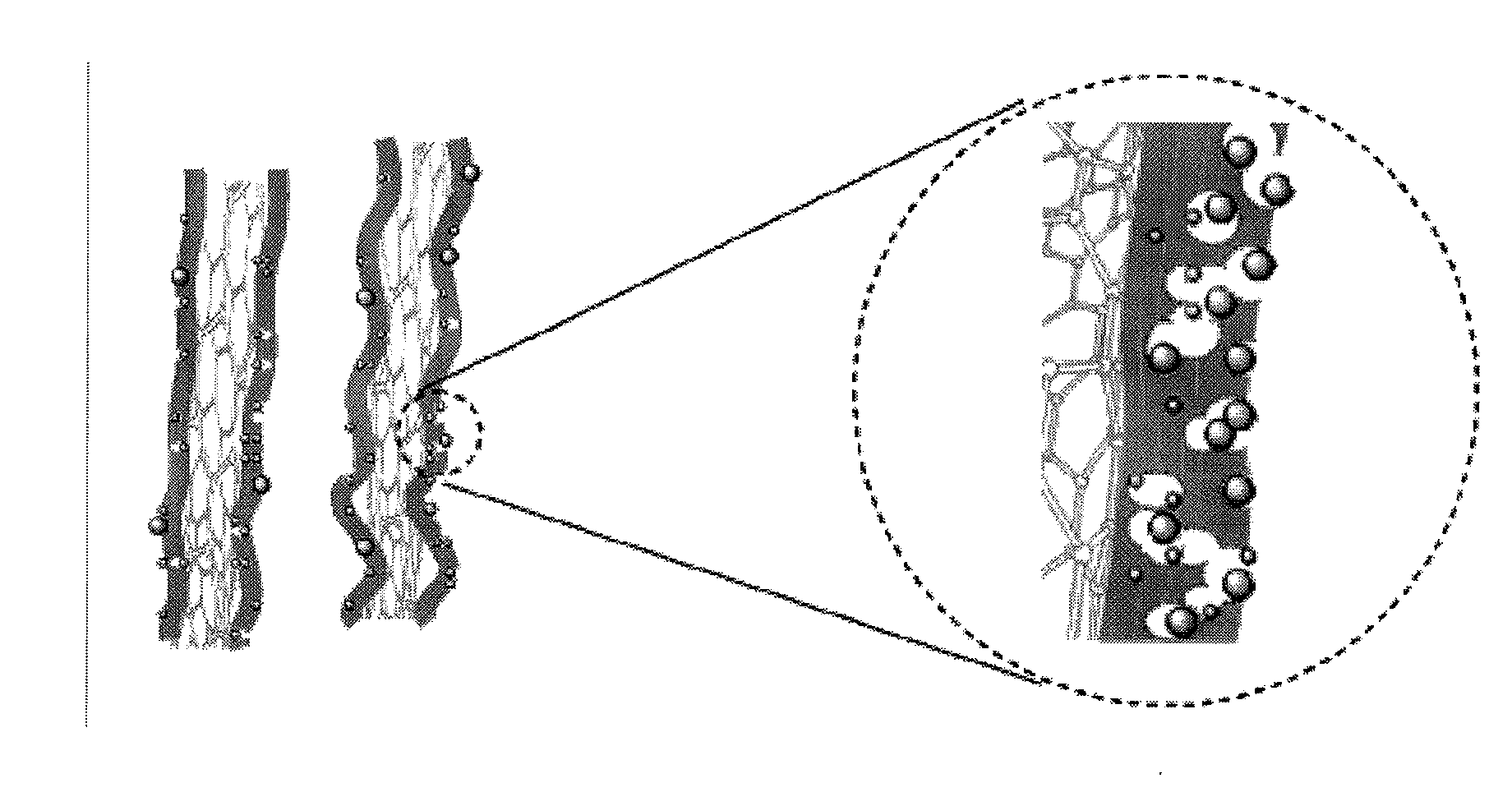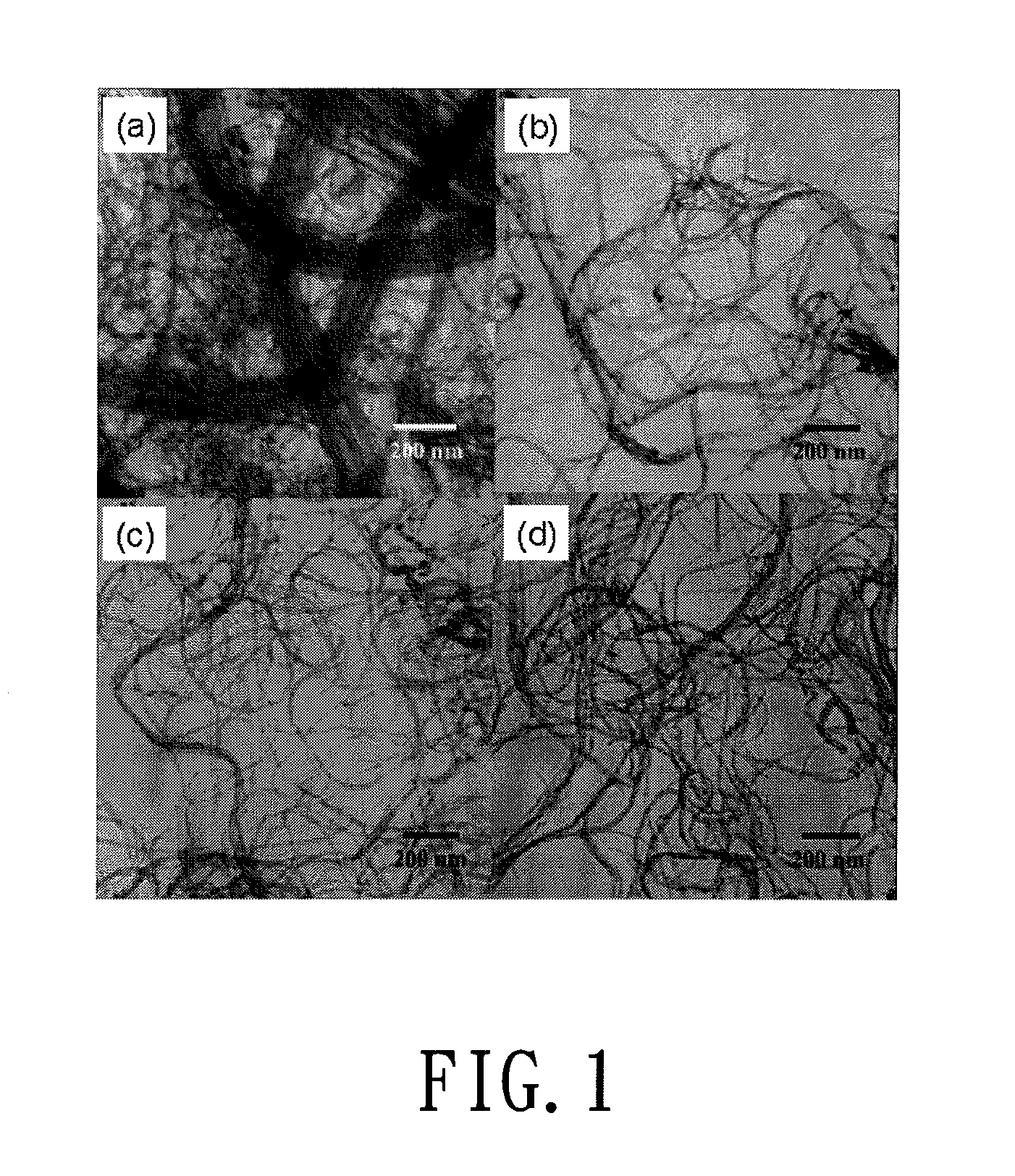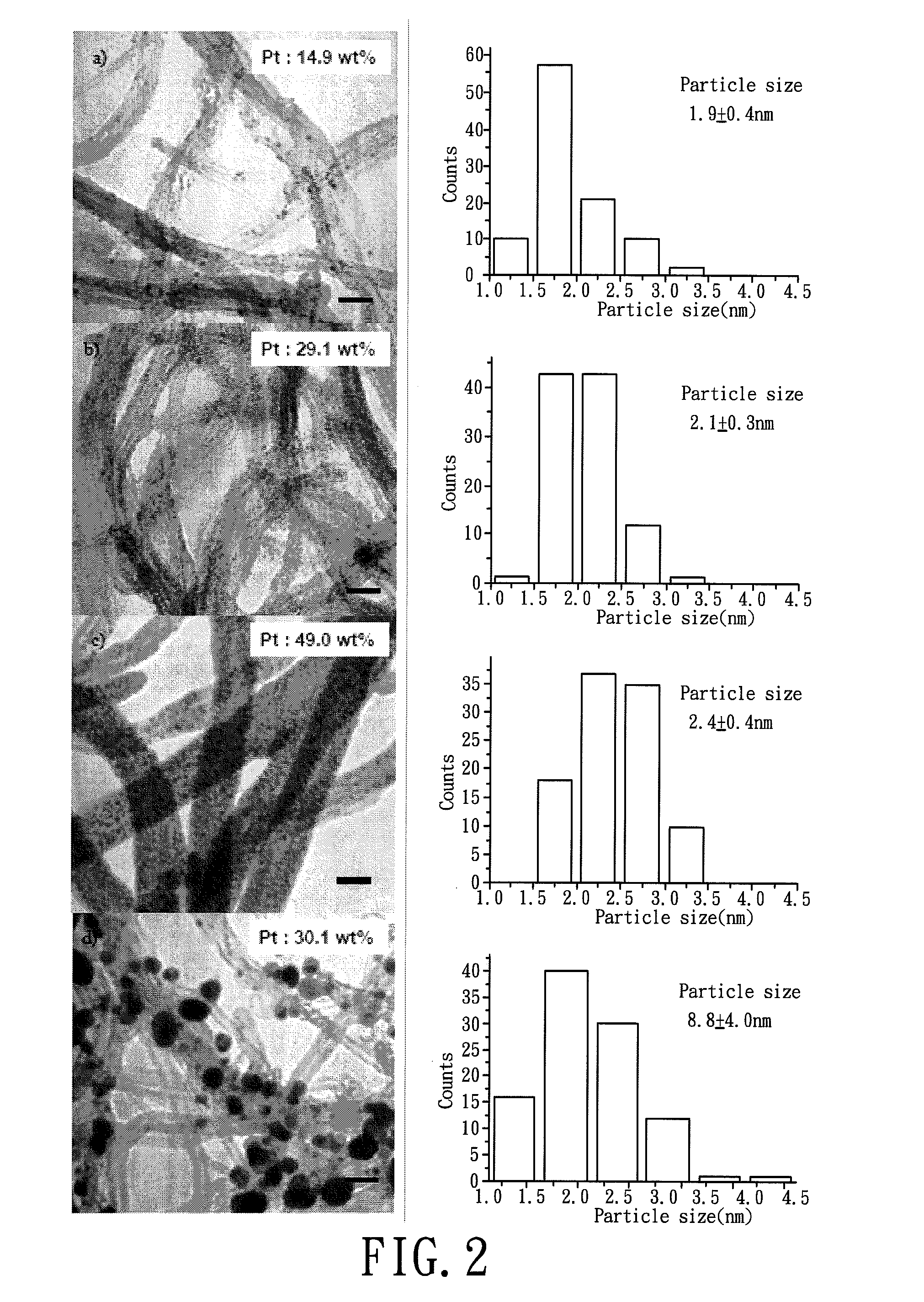Methods of preparing carbinized nanotube composite and metal-nanotube composite catalyst
a technology of metal-nanotube composite and carbinized nanotubes, which is applied in the direction of catalyst carriers, physical/chemical process catalysts, cell components, etc., can solve the problems of reducing the unique properties such as electronic conductivity, and affecting the performance of the catalys
- Summary
- Abstract
- Description
- Claims
- Application Information
AI Technical Summary
Problems solved by technology
Method used
Image
Examples
example i
Debundling / Dispersing CNTs
Examples 1A, 1B and 1C
Aniline-Dispersed NCT
[0043]0.05 g of pristine CNTs was mixed with an aqueous solution of aniline and was dispersed by sonication, then a well-dispersed CNT solution was obtained. The amount of aniline in the aqueous solution (10 ml of isopropanol / 10 ml of water) was varied to be 0.1, 0.5, 2.0 g in Examples 1A to 1C, respectively so that the aniline concentration in the aqueous solution in Examples 1A to 1C were 0.5%, 2.5% and 10%, respectively. Transmission electron microscopy (TEM) was used to investigate the states of the dispersed CNTs as a function of the aniline concentration.
example 1d
Benzoic Acid-Dispersed CNT
[0044]0.05 g of CNT was mixed with an aqueous solution of benzoic acid and was dispersed by sonication to obtain a well-dispersed CNT solution. The amount of benzoic acid in the aqueous solution was varied to be 0.1, 0.5, 2.0 g.
example 1e
Phenol-Dispersed CNT
[0045]0.05 g of CNT was mixed with an aqueous solution containing a water-EtOH cosolvent (water:EtOH=1:1) and phenol, and was dispersed by sonication to obtain a well-dispersed CNT solution.
PUM
| Property | Measurement | Unit |
|---|---|---|
| Temperature | aaaaa | aaaaa |
| Temperature | aaaaa | aaaaa |
| Fraction | aaaaa | aaaaa |
Abstract
Description
Claims
Application Information
 Login to View More
Login to View More - R&D
- Intellectual Property
- Life Sciences
- Materials
- Tech Scout
- Unparalleled Data Quality
- Higher Quality Content
- 60% Fewer Hallucinations
Browse by: Latest US Patents, China's latest patents, Technical Efficacy Thesaurus, Application Domain, Technology Topic, Popular Technical Reports.
© 2025 PatSnap. All rights reserved.Legal|Privacy policy|Modern Slavery Act Transparency Statement|Sitemap|About US| Contact US: help@patsnap.com



